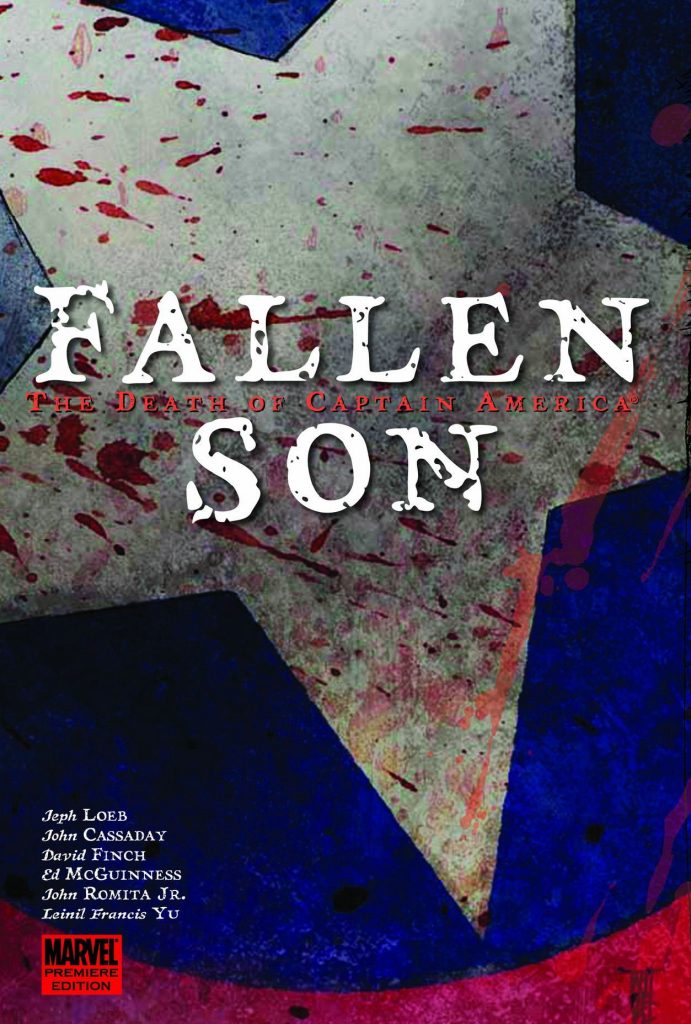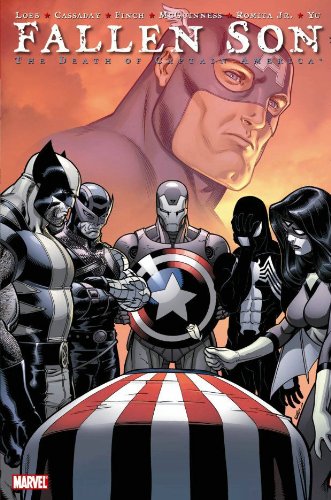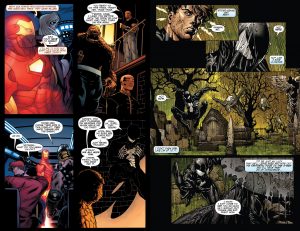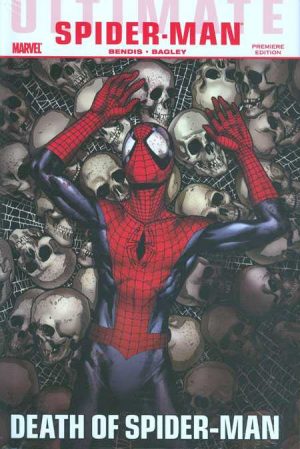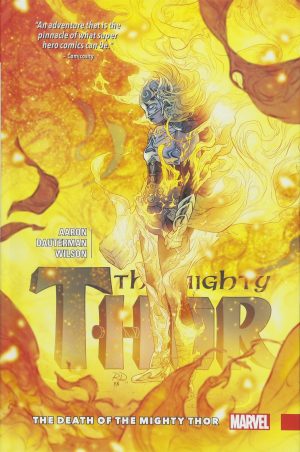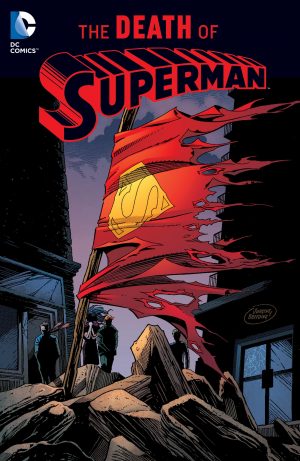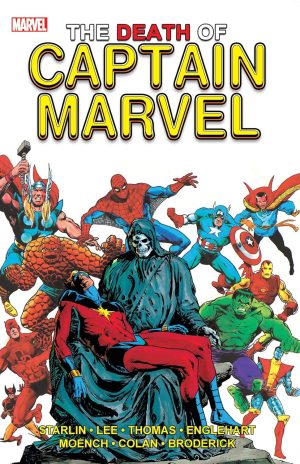Review by Frank Plowright
In 2008 the death of Captain America was a great surprise, big real world news, and an event Marvel promoted across several other titles, along with multiple specials. Five of those are collected here, dealing with the reactions of assorted other heroes close to Captain America.
They’re all written by Jeph Loeb, who ensures a thematic cohesion. The primary narrative voice is in turn allocated to Wolverine, a selection of Avengers, Hawkeye, Spider-Man and Iron Man, but other heroes appear in supporting roles, some prominently, as Loeb makes good use of the possibilities the Marvel universe offers. Each chapter can be read individually, but there’s a continuity from first to last with Tony Stark or Iron Man always putting in an appearance.
Wolverine is first up, with Leinil Yu defining his darker world in an effectively scratchy style. He’s been around long enough to know things aren’t always what they seem, and there’s no way his heightened senses will be fooled if he checks the body. Except that’s on a tightly guarded S.H.I.E.L.D. Helicarrier way up in the sky.
There were two teams of Avengers at the time, as the story occurred during Marvel’s first Civil War. Iron Man leads the officially sanctioned team, while Captain America had been in charge of the other. Loeb runs parallel narratives, looking at members of both teams as they react to events. Compared to his later style, Ed McGuinness is notably restrained on the art.
Also locking into a specific period is that everyone thinks Hawkeye is dead, but when he turns up alive there’s some consideration that he might make the ideal Captain America replacement. John Romita Jr applies his polished style to this chapter, which is a surprisingly complex study of identities.
In a quality selection, working on the Spider-Man chapter, David Finch is the most impressive artist, first pouring gothic splendour into a graveyard scene, then giving old villain the Rhino a muscle and sinew makeover. The sight of every bulging artery is usually a sign of excess, but it works here. For most of the way through this is the most ordinary chapter, but Loeb saves it with a poignant conversation at the end.
What’s billed as the Iron Man chapter is another ensemble piece, eulogies at the centre of Captain America’s funeral. The melodrama is cranked up a notch too high, but the format enables John Cassaday to include pin-up pages. These are variable, with the Sub-Mariner just looking plain wrong on one, but overall Cassaday hits the mark.
While Loeb supplies the obvious continuity, it’s nice that the artists also connect, with the rainy conditions prevalent in all stories, and the format of the first print, oversized edition shows their art well.
The final story content reprints the entirety of Captain America’s first appearance from Joe Simon and Jack Kirby back in 1940. It’s bright and energetic, but showing its age.
That isn’t the case for the 21st century material, even with the story it’s connected to now well in the past. These retain their emotional power and Loeb conveys the impact Steve Rogers had on his fellow heroes.
